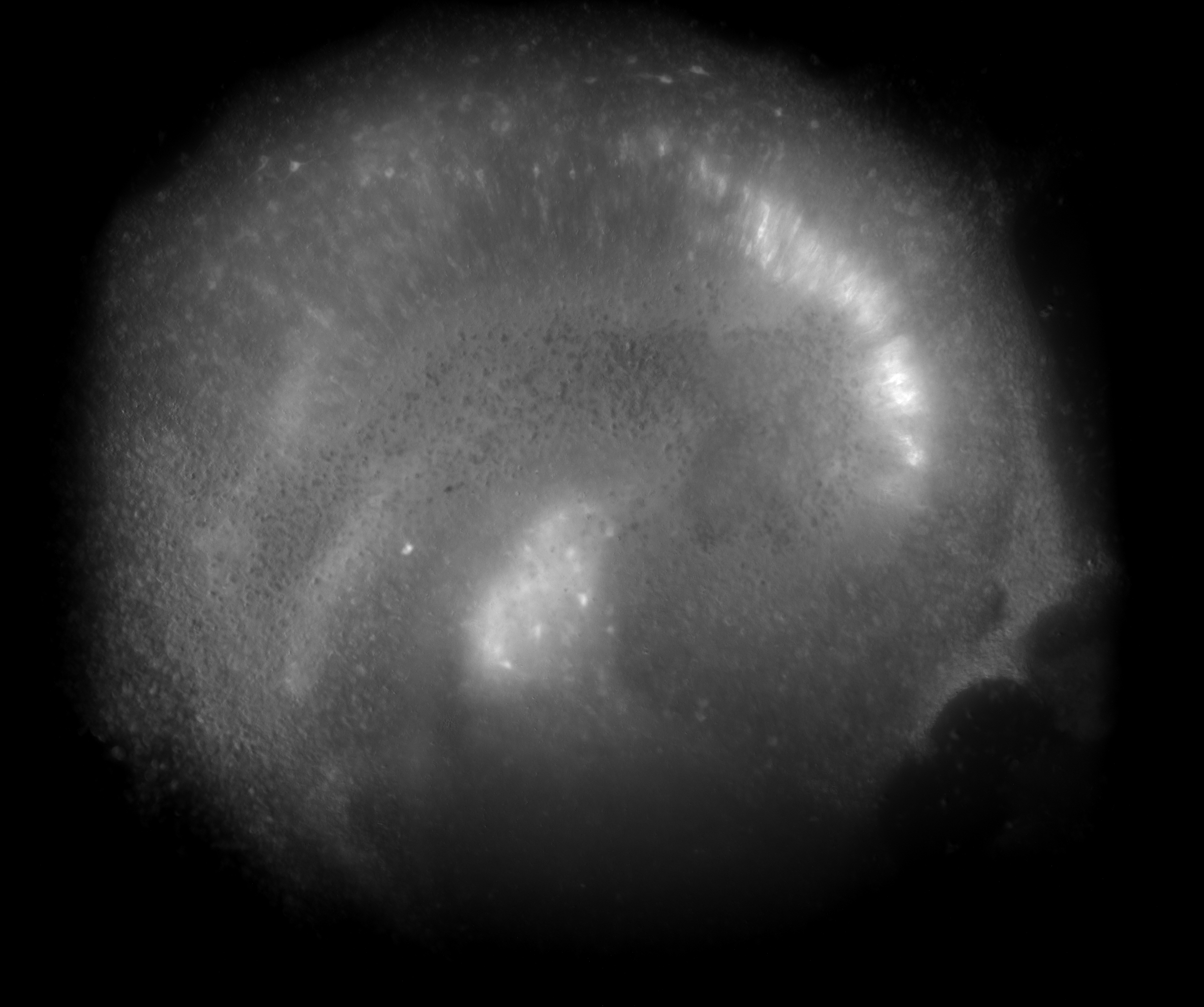pGP-AAV-syn-jGCaMP7f-WPRE in Mouse (AAV9)
Addgene #104488-AAV9
- Data Submitted By
- Kyle Lillis
- Submission Date
- July 12, 2019
- Publication Date
- July 12, 2019 (modified May 16, 2023)
- Abstract
- Not provided
Any further use of this image requires permission from the lab who submitted the data.
- Vector Used
-
pGP-AAV-syn-jGCaMP7f-WPRE
Addgene #104488-AAV9
Virus & Injection
Virus
- Virus Name
- pGP-AAV-syn-jGCaMP7f-WPRE
- Serotype
- AAV9
- Source
- Addgene
- Catalog Number
- 104488-AAV9
- Promoter
- Synapsin
- Cargo Type
- Biosensor
- Injection Titer / Dose
- 2.50E+10 GC/ml
- Injection Volume
- Not provided
- Injection Rate
- Not provided
- Injector Material
- Not provided
- Injection Site / Route
- N/A
- Additional Details
- Slices were incubated with 5μl of AAV in 2mL GBSS + glucose, bubbled with 95/5 for 1hr after slicing and before placing on membrane. This produces widespread expression in the slice; Hippocampal neurons
Other Details
- Species
- Mouse
- Strain or Cell Line
- C57/BL6J
- Source
- Jackson Labs
- Stock Number
- JAX: 000664
- Age at Injection
- P7 (DIV0)
- Time After Injection
- 1 week
- Detection Method
- Direct fluorescence
- Assay & Results
- Not provided
- Functional Testing
- Organotypic slices spontaneously develop seizures in culture. This calcium-sensitive fluorescent protein vector reliably reported seizure activity in hippocampal neurons as expected
- Other Information
- No toxicity was observed
- Tips & Comments
- AAV9 works well in our hands for injections. When slices are incubated in the virus, as in this experiment, capsid seems to be less important
